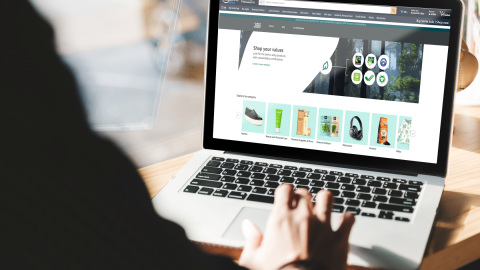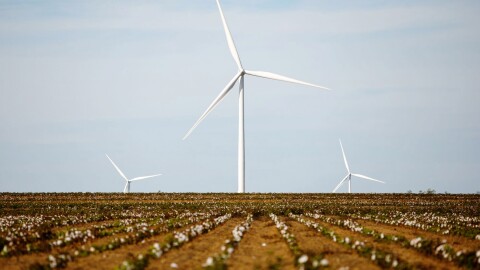We spend a lot of time thinking about the best way to deliver products to our customers. When it comes to packaging, we start with protecting the product—ensuring your order will arrive without damage. From there, we find ways to use less packaging, as well as prioritising recyclable materials. We use a science-based approach that includes continuous materials and technology innovation to find solutions that are good for both customers and the planet. And we’ve continued to improve our process by both expanding on what works and creating and testing innovations to solve for what doesn’t.
We’re proud of the progress we’ve made so far:
- Since 2015, we’ve reduced per-shipment packaging weight by 41% on average, avoiding more than 2 million tons of packaging—around 38 times the weight of the Sydney Harbour Bridge.
- In 2022, we decreased single-use plastic delivery packaging by 11.6% across our global operations.
- In 2022, we shipped 11% of our orders globally without any additional Amazon packaging.
Let’s take a closer look at how our scientists, engineers and teams have achieved these numbers and milestones.

Reducing unnecessary packaging
Sometimes the best solution is to use what already exists. Our Ships in Product Packaging programme qualifies products that have been thoroughly tested to ship in their original packaging, without added Amazon packaging. In 2022, we shipped 11% of our orders without any added Amazon packaging, using machine learning to identify products that allow for safe shipping. We also work directly with selling partners to redesign their packaging, creating innovative solutions that allow their products to ship safely in their original packages.
Since 2021, we’ve more than tripled the number of products shipped without any additional packaging in Australia.
Expanding paper-based packaging
When additional Amazon packaging is required to ship a product, we create paper-based packaging solutions. This packaging can often be recycled at home, while single-use plastic needs to be taken to drop-off centres to be recycled.

In Europe, we have replaced our single-use plastic delivery bags and air pillows with 100% recyclable paper and cardboard packaging in our fulfilment network. We’ve also started using automated packaging technology, which cuts made-to-fit paper packaging for individual items, allowing us to avoid using more than 1 billion single-use plastic delivery bags across Europe. In India, we’ve eliminated single-use, thin-film plastic packaging originating from Amazon’s India fulfilment network since 2020—and we’re a founding member of the Indian Plastics Pact. The Pact unites businesses, governments, and NGOs to shift from a linear to a circular plastics economy.
In the U.S., we announced our first automated U.S. fulfilment centre to fully eliminate single-use plastic delivery packaging. Our engineers reimagined machinery that was previously using plastic, and rebuilt it to use a new type of more durable and weather-resistant paper with heat-sealing technology—in addition to inventing new machines with improved made-to-fit technology. In our Ohio centre, we’ve also transitioned from plastic air pillows to paper filler made from 100% recycled content. This is the first step in a multi-year effort to transition more U.S. fulfilment centres to paper.

We’re also using similar machines that create kerbside-recyclable, made-to-fit packaging in Australia and Japan. These machines pack individual items—such as video games, baby products, health and beauty products, and office supplies—into one of three different-sized packaging options, ultimately helping to optimise and reduce packaging weight and shipped air.
Correct-sized packaging
When an item needs additional Amazon packaging to ensure a damage-free delivery, we aim to use as little as possible. We use machine learning algorithms to examine the qualities of a product and determine the protective packaging it needs.
Over the past five years, these algorithms have helped reduced the use of corrugate boxes by over 35% in North America and Europe. For example, we often opt to use mailers and bags for delivery, which are up to 90% lighter than a similar-sized box. In addition to helping us identify what products can be sent in mailers or bags, machine learning helps us determine the correctly sized cardboard box.
Continued progress
Looking ahead, we will continue to find ways to reduce packaging and increase the use of materials that can be easily recycled. We’re committed to improvement of how orders are shipped for the good of customers and the planet, and we will continue to share these progress updates with our customers.
You can read more about Amazon’s overall sustainability efforts in our annual Sustainability Report.













